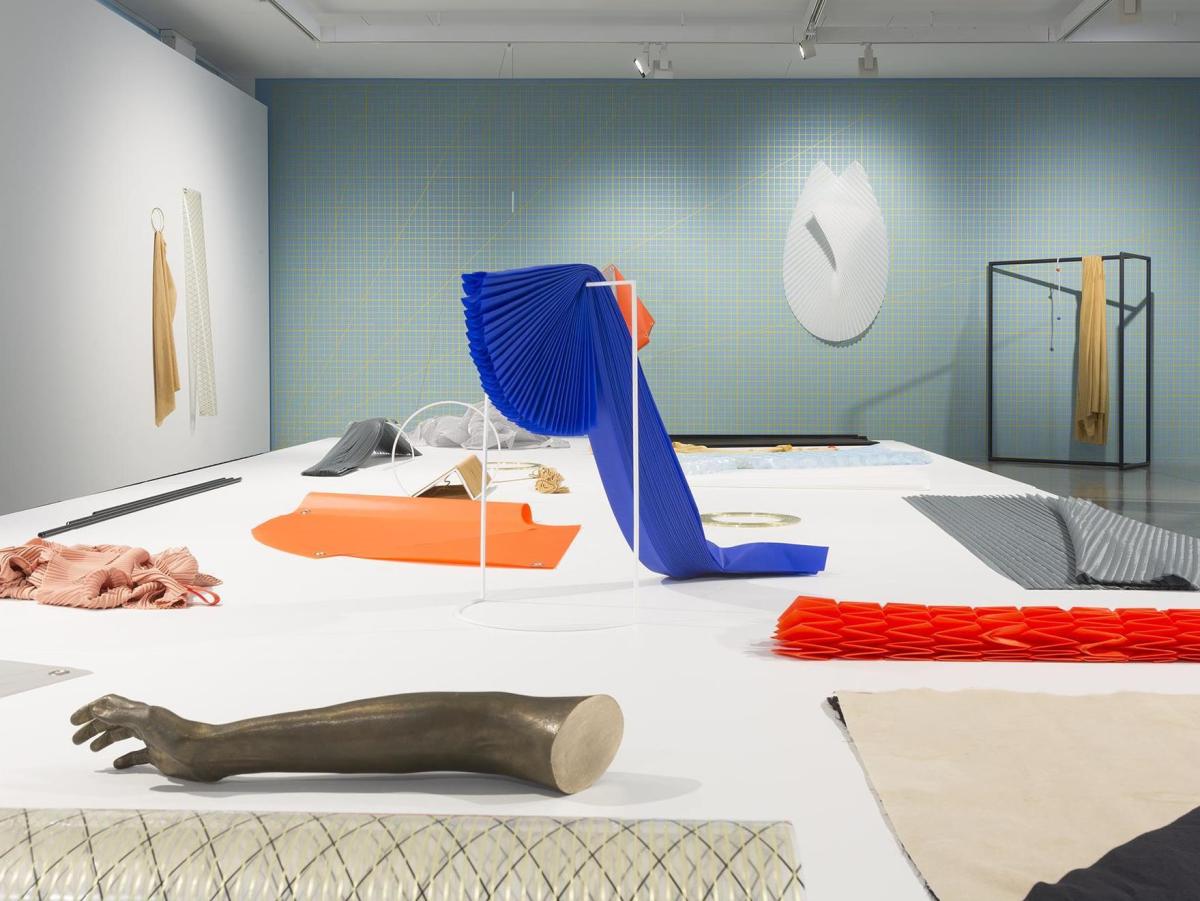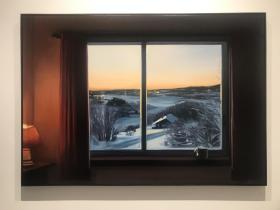Kate Scardifield, Soft Topologies. Installation view, UTS Gallery, 2018 Photo: Jessica Maurer. Courtesy the artist and UTS Gallery
We all move through time and space in a contrasting manner. Our singular movements and interactions are what determine our everyday encounters, while our bodies are shaped by a variety of textures, materials and interactions. As we move through the world, each one of us makes our own map in unique and often intangible ways.
Artist Kate Scardifield explores these familiar and yet abstract pathways in her exhibition Soft Topologies, which considers the movement of our bodies in time and space.
Each visit to the exhibition brings with it a new perspective. Scardifield’s abiding interest in how we understand and interpret personal and collective histories results in an exhibition that remains open to interpretation just as it challenges the act of interpretation itself. Upon entering the gallery, audiences will encounter a glass rectangular box that holds select sculptural pieces made from brass- these are the only objects that remain fixed throughout the course of the exhibition. But what are they?
After undertaking a fellowship with the Museum of Applied Arts and Sciences (MAAS), where the she had access to a wide array of astronomical artefacts once used by colonial astronomer Thomas Brisbane, Scardifield has chosen to display select instruments of celestial navigation including parts of a clock and telescope. But in their new context, devices have been warped and contorted to the point that the mind starts to visualise its own meaning and wonder what the original object was and could be in this new morphed and abstracted state.
Elsewhere in the exhibition, sail cloth, spinnaker fabric, polyester, paper, rope, silk, linen and thread make up an evolving material display by the artist that is changed weekly over the duration of the exhibition as the artist works with invited collaborators. As Scardifield states ‘The idea of Soft Topologies came from thinking about a material that had a looseness and a fluidity to it, that wasn’t fixed or static’.
On my visit, a sculptural piece made from pleated and scored paper stood out in the space, reminiscent of natural and manmade forms the adaptable sculptures reflect Scardifield’s childhood experiences of sailing, and parallel her research into Thomas Brisbane and his celestial navigations.
Audiences will find their own path through Soft Topologies, discovering an ever-changing realm and feeling excitement from new visual narratives. Scardifield describes the foundation of the exhibition as being contained by its title; ‘the word softness describes a continuing, undulating sense of movement’.
The exhibition reflects Scardifield’s critique of the map as a fixed device, with the facts and details of landscape being determined by each new journey through it in space and time.
Kate Scardifield: Soft Topologies
UTS Gallery, Level 4, 702 Harris Street, Ultimo, NSW
27 February – 20 April, 2018
This review of Soft Topologies is published in support of UTS Gallery Student Writing Program.





